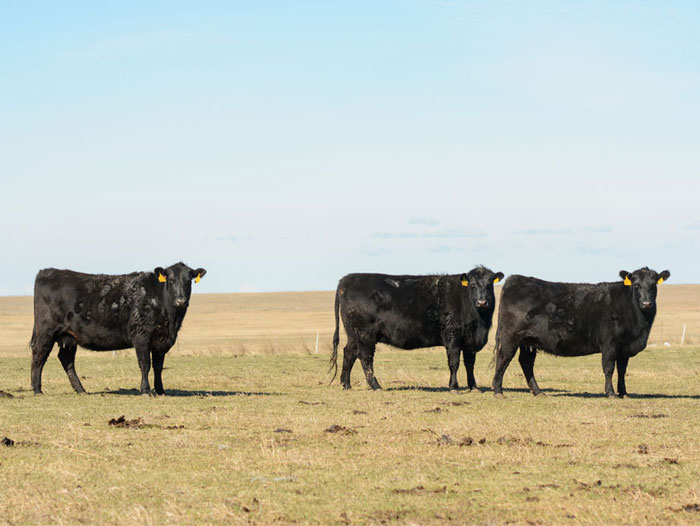The Porsche of Beef
March 31, 2020 | 5 min to read

If USDA Choice were a basic Volkswagen, U.S. cattlemen should be producing the Audis and Porsches made by the same company.
That’s according to Robbi Pritchard, speaking at the recent Midwest American Society of Animal Scientists’ Harlan Ritchie Symposium in Omaha. He was one of five who presented on evolving cattle production to align with consumer demands.
Superior products require superior attention to detail, including shifting demand signals.
“Those consumer preferences seem to be focused on the increased demand we’ve seen for the higher quality products,” Pritchard said. “And the wellbeing of the animals—which gets around to animal husbandry, our environmental impact and how well we manage though the entire supply chain.”
Consumers have proven they’re willing to pay the “Porsche price,” but if the eating experience doesn’t match, then that brand of beef will get scratched off the buy-again list, he said.
Generic cattle have limited potential in today’s branded and specialized marketplace, where the average load is 75% Choice or higher. That’s also the threshold for reward premiums.
Borrowed approach
Learning from others can save a lot of time, worry and money.
Take notes from hog farmers on replacement females, Pritchard suggested.
“In the ’80s, swine producers started to receive letters from packers that their hogs no longer met market specs and they would not buy their hogs anymore,” he said.
The problem? Lack of uniformity and quality in the sow herd. The quickest and most efficient way to make a turnaround was to buy commercial F1 females with a proven record of consistency.
“We can do that in the cattle industry if we’re willing to take that step,” he said.
Leading beef producers are there now, but many more would benefit by following their lead.
Maternal function and carcass quality can be delivered in one package with focused selection. But it doesn’t work if half of your steer calves have maternal sires and half have terminal sires.
Humans have a competitive nature that drives toward “best,” whether that’s luxury cars or premium beef production.
“If we’re building a Porsche, do we buy the cheapest brakes to put in it?” Pritchard asked. Unintended consequences proliferate when losing sight of the end goal.
Cattlemen have built highly efficient cows. Commercial producers should focus on improving the bottom end of the herd for the fastest results.
There are different ways to evaluate efficiency. Some compare weaning weights as a percent of cow weights. Others optimize carrying capacity, which keeps downward pressure on frame size.
“Both of these select for smaller cows,” Pritchard said. “But in the end, we’re still trying to see how many servings of beef we can produce per cow per year.” That’s why he prefers to compare cows on their progeny’s hot carcass weight, times age at harvest, divided by cow body weight.
Efficiency benefits the environment, too. Cattle used to enter the feedyard at 15 to 18 months of age, but today most Northern Plains cattle are harvested by then.
“When feeder cattle go to the feedyard sooner and are harvested sooner, there’s less carbon footprint,” he said.
Some consumers want grass-fed cattle and decreased greenhouse gas emissions simultaneously, Pritchard noted. But the longer an animal walks the earth, the larger its carbon footprint.
“It just doesn’t fit,” he said, while allowing, “We still have to work on finding sustainable solutions.”
Breaking old habits
As for the next challenge, Pritchard asked, “How can you build an entire pen of uniform feeder calves?” Start with how you want to market them and plan backward from there.
Nothing holds more value than a relationship with a cattle feeder to gauge genetic improvement needs in successive calf crops.
“Having that relationship is when you get rewarded for it,” he said.
All of it, starting with those first investments leading up to a breeding season that may include artificial insemination (AI).
“If the AI sires have superior genetics and your cleanup bulls don’t, then you no longer have a uniform, superior calf crop,” Pritchard said. All bulls used have to meet at least average specs. The payback for that comes when the calves sell, whether at weaning, after backgrounding or through retained ownership.
If we can break some old habits, he said, a uniform calf crop decreases the need for sorting and mixing into shared pens at the feedyard; if we do less of that, we will use less antibiotics.
“When we co-mingle, it’s like daycare,” Pritchard said. No amount of vaccinations and health precautions can prevent disease in every animal.
Technology has provided assistance in monitoring animals and streamlining chores, but he said it’s increasingly used as a substitute for choices and husbandry skills. Those require persistent practice.
“Husbandry is kind of like marriage,” he said. Everyone has their own opinion on what makes a successful marriage, so “it’s really hard to define the good ones.”
Animal welfare is the biggest concern from consumers, and husbandry is a key component.
Technology and husbandry intermix during heat detection, Pritchard said. He noted a commonly listed advantage of timed AI is that it eliminates the need to identify which cows are in heat.
“But,” he asked, “if we are challenged to find help that can recognize estrus, how capable are we of identifying early signs of illness in feeder cattle?
There’s more to raising a good steak than what meets the eye. It has to have superior attention from first plans to the dinner table.
